Recently back from a week long cruise out of Barbados visiting six different islands (Tobago, Trinidad, Saint Vincent, Grenada, Dominica and Saint Lucia). My focus, not surprisingly, was on a number of new warblers including Masked Yellowthroat on Trinidad (a new species for me after a split last year), Whistling Warbler on St. Vincent and Plumbeous Warbler on Dominica. I will cover each island below in the order we visited. We stopped in Florida on the way to and the way back from the cruise and the warblers seen during those stops can be found at the following link. Full trip report (birds beyond warblers included) at the following link: southern Caribbean cruise.
During our first stop of the cruise in Tobago warblers did not figure prominently with few possible species to be seen but nonetheless I still had a couple species in the rainforest with a Northern Waterthrush and an American Redstart. The guide for the day was Jason Radix (all the guides I had were excellent and I will list contact info for each at the end of the post).
The second stop was to the large island of Trinidad with the target warbler being the Masked Yellowthroat. Following the most recent taxonomic update I no longer had the species on my warbler list as the birds I had seen that were formally considered Masked Yellowthroats got split off into three new species (Masked Yellowthroat, Black lored Yellowthroat and Southern Yellowthroat). On our way into port we sailed past the Paria Peninsula of Venezuela which contains an endemic warbler (Paria Redstart) that I'm likely never to see given the political climate of Venezuela. I was off the ship right after eight and then met up with my guide for the day, Faraaz Abdool. We immediately headed to the most promising location within striking distance of the port for Masked Yellowthroat. After a few wrong turns we eventually made it to the location just after nine and started looking. The day was already getting hot with a fairly constant breeze…not great conditions for finding the warbler. As we watched and waited we turned up lots of other birds but no yellowthroat. The only warblers we had initially were a couple Northern Waterthrushes along the wet ditches. After getting stung by a wasp my luck turned around a little when I had a Masked Yellowthroat pop up ever so briefly. It dropped down out of view almost as fast as it appeared and I had no chance to get a photo. We waited a bit more for it to show up again but no luck so after one and a half hours plus we moved on to another less reliable spot for the yellowthroat and had no luck. Other warblers for the day, besides the previously mentioned Masked Yellowthroat and Northern Waterthrush, included Yellow Warbler and American Redstart. We tried one more time in the initial location for the yellowthroat on the way back to the ship but had no luck.
The third stop on the cruise to the island of Saint Vincent held one of the major targets for the trip with the endemic Whistling Warbler, a unique looking warbler of the forest. It is found within the rain forest and typically feeds quite actively among tense tangles so getting looks and photos can be a challenge. My guide for the day was Lystra and we met up in the port a little after eight and then made the drive up into the mountains to try for the warbler. We arrived near the Montreal trails in the St. Vincent Parrot Preserve a little after 9AM and started walking up the trails into the rain forest. The trail reminded me of many other steep trails in the tropics I have been on. The first spot we checked for the warbler initially didn’t produce it and sorting through the hordes of Bananaquits (the subspecies there is all black) without finding it was a bit frustrating. Nonetheless we persevered and I got quick views of a male that then dropped out of sight, never to be seen again after just a few seconds of viewing. At this point I decided to try a few other spots further up the trail to try to get better looks and hopefully some photos before we moved on to try for any other target species for the day. The trail going up the mountain was a bit steep and muddy in spots and we finally reached the second location (of three the guide knew) and we started looking again. We got another individual that showed much better and allowed for some great photo opportunities. I was ecstatic to get this bird as I knew it was the rarest of the three targets on the trip. At this point the day was a complete success in my book and anything else seen was a bonus. The Whistling Warblers were the only species of warbler for the entire day in the field. Loads more photos for the day at the following link.
The stop in Grenada involved kayaking along the coast so no warblers for that day although I did try my best to turn up a warbler in the mangroves without luck.
The final target warbler for the trip was Plumbeous Warbler on the island of Dominica. It is a rear endemic, occurring on only Dominica and Guadeloupe. I met up with the guide as soon as I could get off the ship and we started driving north. He said the Plumbeous Warbler should be easy to find and he knew a spot where a pair were likely nesting right along the road. As we worked our way up the mountain road into Morne Diablotin NP we made a stop and almost immediately had a Plumbeous Warbler that sang a few times and showed well. A really striking warbler and yet another species I have been waiting to see for years with hurricanes, cruise schedule changes and then Covid getting in the way. I got loads of photos as we had a brief bit of sun before some rain showers moved back in. The rest of the day was spent looking for other target species, which took a lot more effort than the warbler did. We ran across another pair of Plumbeous Warblers as we walked out of the trail after failing to see the Imperial Parrot (we did get the other targets thankfully). A full album of photos for the day in Dominica at the following link.
The final port visited on the trip was Saint Lucia. I had previously visited the island back in March 2019 during which I found the endemic St Lucia Warbler during a trip to the Millet Reserve. During our stop we headed north from the port of Castries to Pigeon Island which featured some nature trails as well as ruins of fortifications. As I walked all the trails over the course of the morning into the early afternoon the only warbler I had during the visit to Pigeon Island was a single St Lucia Warbler that showed briefly. Always somewhat sad to visit St. Lucia as it is the former location of one of the only extinct wood warblers...the Semper's Warbler. There is a slight chance it hangs on in the most remote parts of the island but the chances are very low.
Overall for the cruise I found all my targets with a total of seven species of warblers with three of those new for me. The new species were Masked Yellowthroat, Whistling Warbler and Plumbeous Warbler. I have now seen every warbler north of South America except for two species that occur mainly in the remote and largely inaccessible area of the Darian area on the border of Panama and Colombia (Tacarcuna Warbler and Pirre Warbler).
As promised here is a link to each guide I used on the various islands. All were found by using the Caribbean Birding Trail link and I would highly recommend one and all if taking a trip to any of the islands. A special thanks to each guide for providing some great birding days.
-Tobago I used Jason Radix (www.naturetobago.com)
-Trinidad I used Faraaz Abdool (www.faraazabdool.com)
-St. Vincent I used Lystra Culzac (lystraculzac_wilson@hotmail.com)
-Dominica I used Bertrand Jno Baptiste AKA Dr Birdy (drbirdy2@cwdom.dm)
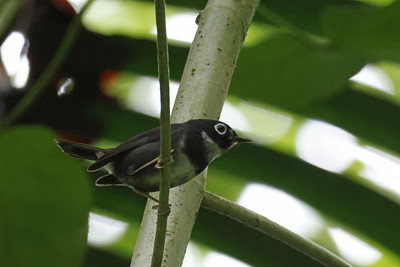


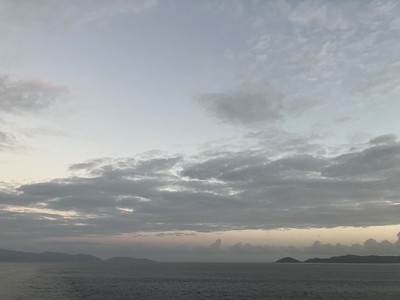
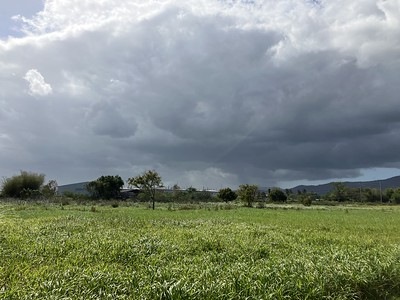
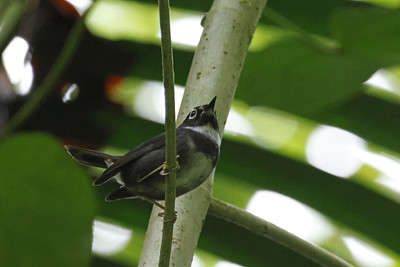










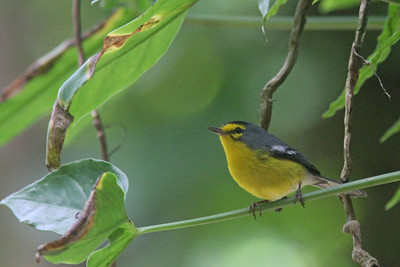
No comments:
Post a Comment